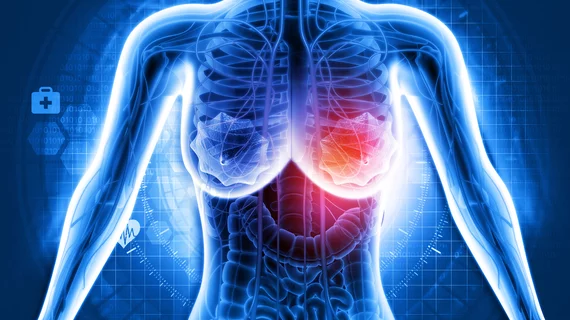AI-based, risk-stratified breast cancer screening program could save health system upward of $109M annually
Adapting a new artificial intelligence-based, risk-stratified breast cancer screening program could save one health system upward of $109 million annually, according to new research published Thursday.
Currently, the United Kingdom’s National Health Service urges women ages 50 to 70 to undergo breast cancer screening every three years. However, this “one size fits all” approach could be better tailored to target women at greater risk of developing the disease, experts wrote in JAMA Network Open [1].
One way to do this is by utilizing an artificial intelligence tool called Mirai, which interprets data automatically generated from mammograms. The AI model offers an immediate estimation of a woman’s short-term risk of cancer incidence following a negative screening exam. It also is open-source and freely available for research, offering “arguably the best (retrospectively) validated AI model for short-term breast cancer risk assessment.”
“While the performance of the AI model for risk assessment is highly promising, one area that has not been rigorously evaluated is whether using the model to guide screening could offer value for money,” Harry Hill, PhD, with the School of Medicine and Population Health at the University of Sheffield, United Kingdom, and co-authors wrote Sept. 5. “Our aim was therefore to assess the potential cost-effectiveness of integrating risk-stratified screening using the model into the UK National Breast Cancer Screening Program, through a health economic model.”
Hill and colleagues developed a decision analytical model to estimate how different screening intervals could impact health-related quality of life, cancer survival rates and costs. The model assessed intervals ranging from 1 to 6 years and compared them against the current triennial approach. A screening schedule of every 6 years for the lowest-risk individuals, biannually and triennially for those at below and above average risk, respectively, and annually for those at highest risk would reduce NHS spending by between $77.3 million to $109.2 million annually. This would include setting quality-adjusted life years at about $25,600 for the lower estimate and $38,400 for the higher one. Even when setting the QALY value at $1.28—a scenario that involves investing no new resources in screening programs—this new approach would save the NHS $13.6 million annually, the authors noted.
“The health economic model suggests that [risk-stratified breast cancer screening regimens] can reduce screening utilization, NHS costs, and invasive cancer in the population and increase [quality-adjusted life years],” Hill and colleagues wrote. “The reduction in the number of screenings with an RSBCR could free up resources to address screening backlogs and reduce wait times where those problems exist in the U.K. potentially further improving breast cancer outcomes.”
Read more, including potential study limitations, at the link below.

